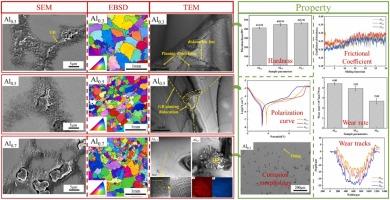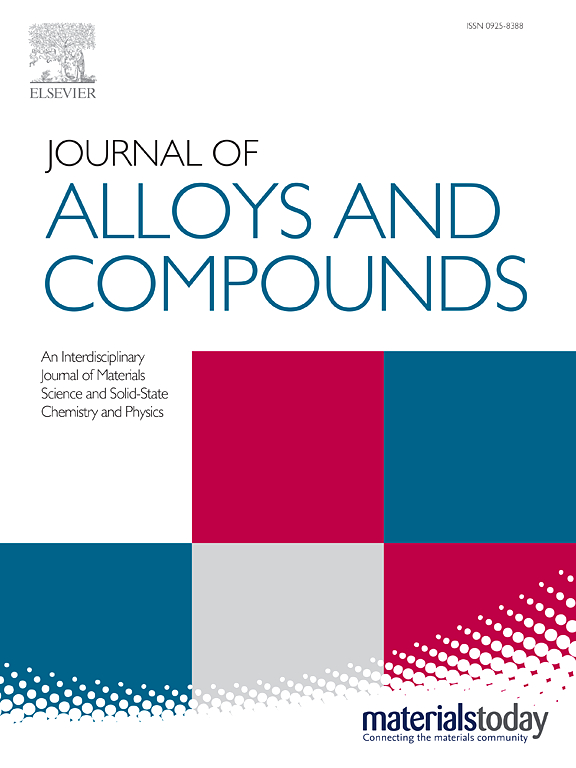Al content regulation of microstructure, wear resistance, and corrosion behavior in Mo0.5NbTiZrAlx high-entropy alloys
IF 5.8
2区 材料科学
Q2 CHEMISTRY, PHYSICAL
引用次数: 0
Abstract
This study is aimed at investigating the Mo0.5NbTiZrAlx (x = 0.3, 0.5, 0.7) high-entropy alloys (HEAs) produced via arc melting. The microstructure, microhardness, wear resistance, and corrosion resistance of alloys were studied systematically. The results revealed that Mo0.5NbTiZrAl0.3 and Mo0.5NbTiZrAl0.5 compositions had a single BCC phase structure, while the Mo0.5NbTiZrAl0.7 composition exhibited a BCC+B2 phase structure. Meanwhile, the alloys exhibited the typical dendritic morphology. The increase of Al content promoted grain refinement and crystal orientation randomization. It also enriched the defect structure within the alloys and induced the occurrence of spinodal decomposition phenomenon. Moreover, the increase in Al content significantly improved the hardness and wear resistance of alloys, which was attributed to synergistic effects of tough BCC phase, solid solution strengthening, B2 phase strengthening, fine grain strengthening, and dislocation strengthening. In addition, the electrochemical tests confirmed that the increase of Al content inhibited the improvement of corrosion resistance due to the growth of Al2O3 films aggravated the erosion by Cl-.

求助全文
约1分钟内获得全文
求助全文
来源期刊

Journal of Alloys and Compounds
工程技术-材料科学:综合
CiteScore
11.10
自引率
14.50%
发文量
5146
审稿时长
67 days
期刊介绍:
The Journal of Alloys and Compounds is intended to serve as an international medium for the publication of work on solid materials comprising compounds as well as alloys. Its great strength lies in the diversity of discipline which it encompasses, drawing together results from materials science, solid-state chemistry and physics.
 求助内容:
求助内容: 应助结果提醒方式:
应助结果提醒方式:


